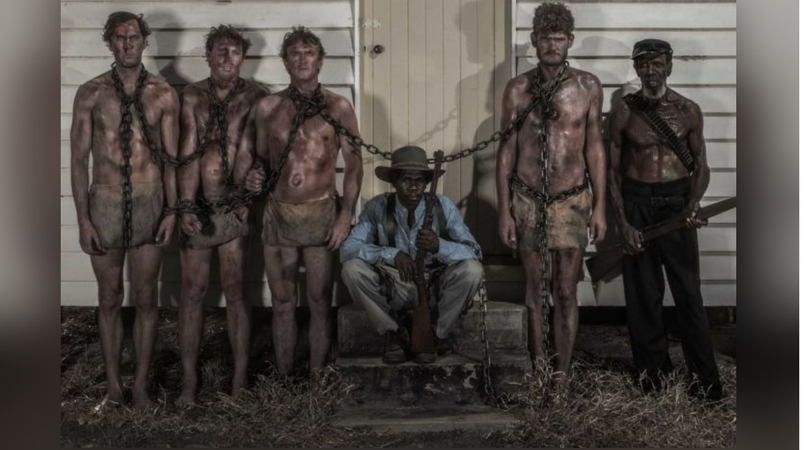
The Cape York community of Coen, home to just over 300 people, has a violent past as a mining camp and police base.
"It was set up to gather the Indigenous people from out in the bush and chain them up and bring them into Coen ... to get them off the country," says artist and Kaantju traditional owner Naomi Hobson.
Now, in collaboration with photographer Greg Semu, Hobson has set out to explore this history by recreating brutal archival images.
But in Semu's images the script has been flipped — often the victims pose as abusers. And the entire Indigenous community of Coen was involved in the recreations.
Scared to speak
Today, eight Indigenous clan groups reside in Coen, living alongside a handful of non-Indigenous families who trace their ancestry back to gold miners.
Hobson, who has been based in the town her entire life, says her community has often been unwilling to talk about its past.
"They come from that history where they couldn't speak about where they came from, they couldn't speak their language ... they were treated like cattle basically.
"Just rounded up from the bush and taken into a reserve that was fenced in."
Though Coen's residents have learned to live together, Hobson believes the project, which is on display at the Cairns Art Gallery, has sparked much-needed conversations about the community's brutal past.
Flipping the script
For his part, Semu says he wanted to push the conversation past the typical narrative of colonisation.
"It's a two-character play — us and them, the victim and the victimiser. Each party knows the characters extremely well, but to rewrite the story, to take control of writing the next chapter, you need to understand all the characters in the play.
"By acting and performing in this drama of the colonial history of Australia, reversing the roles where they get to play the oppressor, all of this is like art therapy."
Art therapy taking effect
Hobson explains that on the completion of the project, community members created a dance in respect for the work.
"Now in discussions around the table they feel like they can talk freely about our history.
"Just gaining confidence was a big thing that I found in the mob and it was through their dancing and singing and just being much more open."
While this photographic project has forced Coen to reflect on the past, Hobson believes it has implications beyond the community — colonial violence was not confined to one part of Australia.
